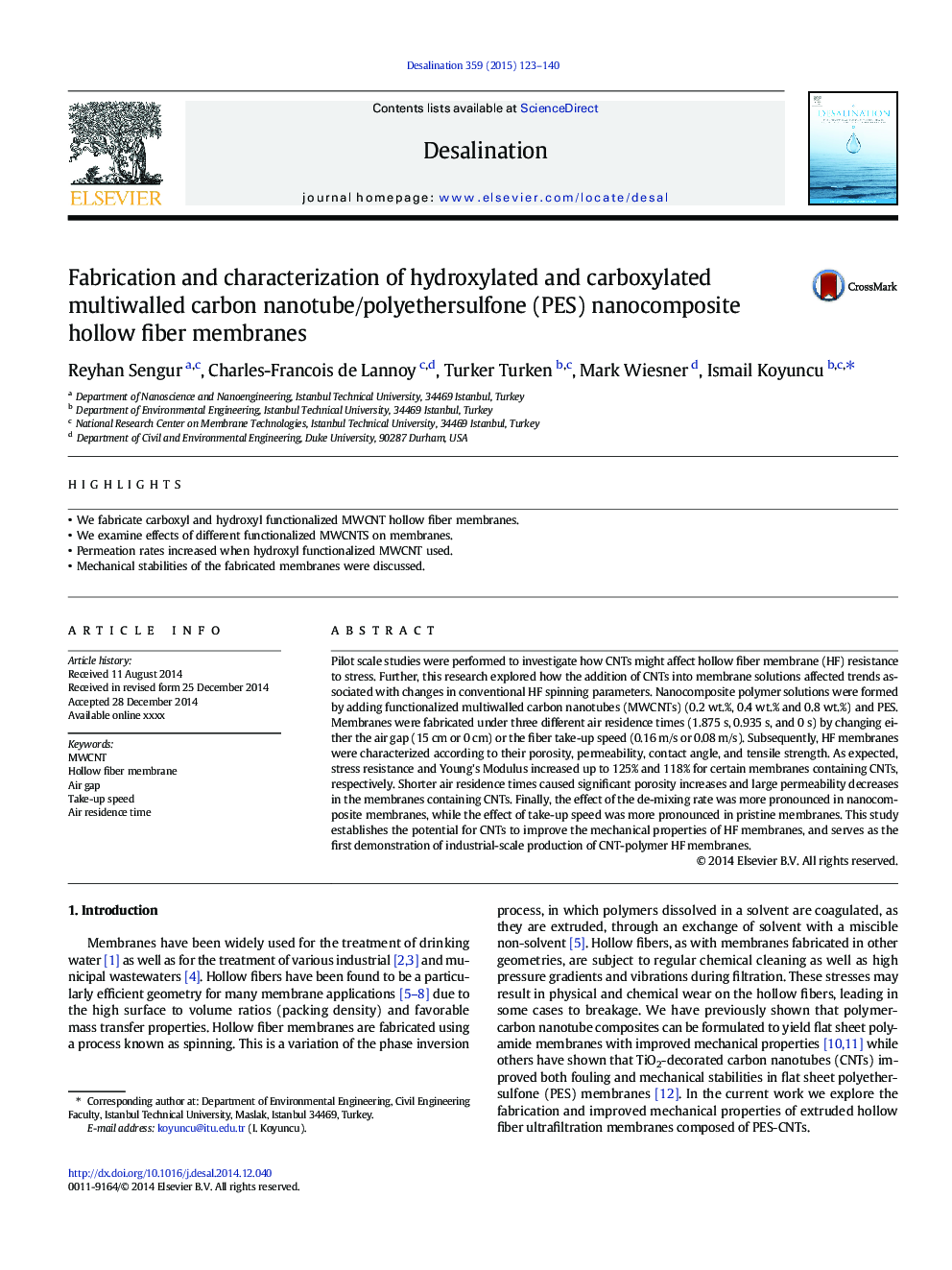| Article ID | Journal | Published Year | Pages | File Type |
|---|---|---|---|---|
| 7008403 | Desalination | 2015 | 18 Pages |
Abstract
Pilot scale studies were performed to investigate how CNTs might affect hollow fiber membrane (HF) resistance to stress. Further, this research explored how the addition of CNTs into membrane solutions affected trends associated with changes in conventional HF spinning parameters. Nanocomposite polymer solutions were formed by adding functionalized multiwalled carbon nanotubes (MWCNTs) (0.2Â wt.%, 0.4Â wt.% and 0.8Â wt.%) and PES. Membranes were fabricated under three different air residence times (1.875Â s, 0.935Â s, and 0Â s) by changing either the air gap (15Â cm or 0Â cm) or the fiber take-up speed (0.16Â m/s or 0.08Â m/s). Subsequently, HF membranes were characterized according to their porosity, permeability, contact angle, and tensile strength. As expected, stress resistance and Young's Modulus increased up to 125% and 118% for certain membranes containing CNTs, respectively. Shorter air residence times caused significant porosity increases and large permeability decreases in the membranes containing CNTs. Finally, the effect of the de-mixing rate was more pronounced in nanocomposite membranes, while the effect of take-up speed was more pronounced in pristine membranes. This study establishes the potential for CNTs to improve the mechanical properties of HF membranes, and serves as the first demonstration of industrial-scale production of CNT-polymer HF membranes.
Keywords
Related Topics
Physical Sciences and Engineering
Chemical Engineering
Filtration and Separation
Authors
Reyhan Sengur, Charles-Francois de Lannoy, Turker Turken, Mark Wiesner, Ismail Koyuncu,
